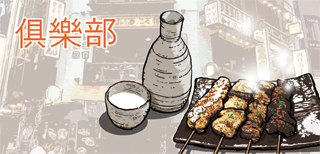What’s in a name?

The JoongAng Ilbo reported on the new “Japanese wave” in Korean society in a special article titled, “Korea infatuated with Japan” on April 2. The day before, a foreign media outlet published the Japanese government’s tourism report. Among the foreign visitors to Japan in January and February, Koreans made up the largest group. Until last year, Chinese people made up the biggest foreign tourist group. Many Koreans are charmed by Japan. Sejong University Professor Yuji Hosaka, a naturalized Korean citizen, said, “Koreans have become mature enough to openly enjoy what they like even if they have historic antagonism toward Japan.”
Nevertheless, the morning paper left me feeling bitter. Did it have to be “Gurakbu,” for instance? In fact, many Japanese restaurants include “Gyeongseong” in their names. Both are terms used during the Japanese occupation era. Gurakbu is a Japanese pronunciation of “club.” When Seoul was called Gyeongseong, there used to be many such clubs in the capital.
Restaurants with such names remind us of that time in interior and exterior designs. I searched “Gurakbu” on Naver map and got more than 60 places in the Seoul metropolitan region alone. Most of them are Japanese restaurants.
Perhaps the marketing strategy was to mix Japanese food with nostalgia. But who would want to evoke the nostalgia of the Japanese colonial era? Those who had to go through that period remember the time as shameful and painful. Maybe they want to targeting Japanese tourists?
I asked an employee in one of the restaurants whether Japanese tourists really visit it. I was told that there were few Japanese customers. Most of the visitors were Koreans in their 20s to 40s. They may find Japanese food tasty and Japanese culture appealing, but the marketing that evokes nostalgia of the Japanese colonial period goes too far. To put it simply, it is tasteless.
JoongAng Ilbo, April 3, Page 29
*The author is a business and industry new reporter of the JoongAng Ilbo.
CHOI JOON-HO










with the Korea JoongAng Daily
To write comments, please log in to one of the accounts.
Standards Board Policy (0/250자)